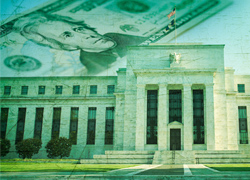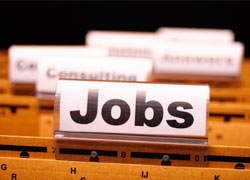The Federal Reserve kept interest rates around zero on Wednesday, January 26, but maintained its intention to abandon its pandemic-era cheap money policies in the face of significant price increases.
So, what can we see in the long run?
Powell’s press conference
Federal Reserve Chair Jerome Powell suggested in his post-meeting news conference on January 26, 2022, that the Federal Open Market Committee (FOMC) will stick to the bond purchase program outlined in December 2021.
The Fed declared in December 2021 that it would stop adding to its balance sheet by March 2022, a process known as tapering.
However, a price increase since last year is weighing on the FOMC, which is coming around to the idea that higher interest rates will be required to avert runaway inflation.
Higher interest rates might reduce inflation by increasing borrowing costs and decreasing demand, particularly for goods.
On both ends
The Fed has two mandates: price stability and maximum employment. In terms of stable prices, the FOMC agreed that inflation remains high.
According to the Consumer Price Index, prices in the United States increased by 7.0 percent between December 2020 and December 2021, the highest year-over-year rate of inflation since June 1982.
Fed officials have warned that high inflation readings might remain through the first quarter of this year, raising pressure to tighten policy.
Despite accusations that it has been slow to act, the Fed is acting considerably faster than predicted, owing to the inability of inflation to fade as expected amid solid demand, clogged supply chains, and tightening labor markets.
Powell’s second-term
The meeting is the final one of Powell’s current tenure as Fed chairman, which expires in early February. President Joe Biden has nominated him for another four years as Vice President, and he is anticipated to be approved by the Senate with bipartisan support.
Last week, Biden praised the Fed’s intentions to reduce monetary stimulus and stated that it is the central bank’s responsibility to control inflation, which has become a political issue for Democrats ahead of the November midterm elections. They risk losing their slim majority in Congress.
Market reaction
Unsurprisingly, markets saw these remarks as a signal that tighter policy was on the way, and we’ve seen a typical reaction. The US dollar and short-term treasury rates are climbing in lockstep, with the 2-year yield reaching 1.12 percent, its highest level since February 2020.
Meanwhile, US indexes are sliding on the day, erasing previous gains and riskier currencies such as Australian and New Zealand dollars.
What to look for in the coming months?
The Fed did not increase interest rates on Wednesday because officials have made it clear that they intend to finish the central bank’s pandemic-era asset purchases first.
The FOMC said Wednesday that it would complete that process in early March, implying that the first-rate rise since the epidemic might occur within six weeks. Looking ahead, the FOMC issued a paper outlining principles for how it may actively cut its asset holdings in the future, stating that such a move would begin after the process of raising the target range for the federal funds rate has begun.


